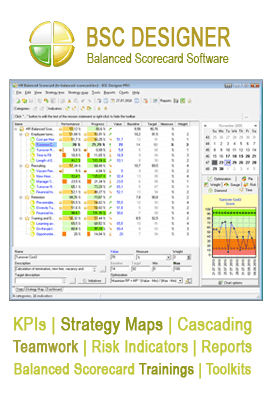Achieving Performance Management during Economic Downturn
Performance management during economic downturn seems a lost cause these days. However, this need not be the case with the help of the implementation of recession KPIs.
We all know how the concept of performance management during economic downturn can be a bit hazy, especially today when the effects of recession are now being felt all over the world. All sorts of companies and industries are affected by this financial bind that we have found ourselves in. What is worse is the fact that this economic recession we find ourselves in is not about to end anytime soon. We are not even at the lowest point yet, as claimed by expert analysts. With all the bad things going on around you and with nearly everything falling apart in your own enterprise, could there still be something that you could do? Yes, there actually are a few things that you can do to somewhat alleviate this difficult situation. The most important of your options is actually the implementation of recession KPIs or key performance indicators. Recession KPIs can indeed help you maintain a more stable performance for your enterprise.
So, how then can you do this? The first step is to take on a fresh perspective of all sorts of problems circulating in your enterprise. By all problems, we mean both the internal and the external ones. When examining these problems, make sure to look out for every possible cause behind each one of them. Look for both the qualitative and the quantitative ones. Quantitative signs could include the company’s inability to meet standard set forecasts, declining market margins or market shares, declining sales, as well as an increasing number of short-term debts.
Qualitative signs, meanwhile, can include high employee turnover, high management turnover, and degradation of the enterprise’s market value. The last sign can be either real or perceived. However, this remains extremely important no matter the nature of the sign because it affects the psyche of the enterprise’s workforce. If employees perceive that the market value of the company is degrading, then they would not hesitate to start looking elsewhere for greener and safer pastures. This then makes performance management much harder to achieve. A lot worse could definitely happen if the last sign is indeed real, not just perceived. All the more would employees leave the enterprise for greener pastures willingly.
After identifying internal and external issues, you should then check the IT systems currently being used in your company. Are these systems still working efficiently? Is the information they provide still relevant – to the extent that they can be relied on to based good decisions from? This is exactly where KPIs are the most needed. Now, do not make the mistake of assuming that the KPIs you once used would still be effective. There are significant changes that have surfaced so these KPIs need much revamping as well. Do not go for broke with the number of KPIs to use. Just go for a significant few, roughly five in number.
With the causes of all issues determined, plans of action can then be developed. Usually, senior management members would be the ones responsible for the development of strategies as well as the communicating of these strategies to investors, stakeholders, and the employees themselves. However, to maintain an unbiased perspective, it is recommended to hand this task over to an external advisor or consultant.
Recession KPIs can definitely help when it comes to performance management during economic downturn. The process may take long but it will certainly be worth your while.
